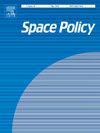What is an appropriate investment hurdle rate for commercial space resource development projects?
IF 1.9
4区 社会学
Q2 INTERNATIONAL RELATIONS
引用次数: 0
Abstract
This article sets out to identify an appropriate hurdle rate range for commercial space resource development projects, should such an industry eventuate. There has been little consistency in the use of hurdle rates and discount rates in the evaluation of space resource projects proposed to date. The article uses two approaches to determine an appropriate hurdle rate for the economic evaluation of such projects. Firstly, the article reviews hurdle rate usage in three industries with parallels to a potential space resource industry – the mining industry, the oil & gas industry, and the aerospace industry. The venture capital sector is also considered. The article finds that there is limited direct reference to the hurdle rates used in these industries and therefore uses expected project IRR and corporate Cashflow Return on Investment (CFROI) as proxies to quantify hurdle rates in each industry. Secondly, the article develops a Risk Build Up Method (RBUM) to determine appropriate hurdle rates for hypothetical commercial space resource development projects by quantifying the potential commercial risk to which such projects could be exposed. The RBUM process correlates a commercial risk score quantified on a project by project basis with a hurdle rate risk premium scale to determine an appropriate hurdle rate for such projects. Finally, the article discusses discount rate treatment in the analogue industries, with a view to proposing a consistent approach to the use of discount rates in a potential space resources industry. The article finds that hurdle rates in the range of 25% could be appropriate for potential commercial space resource development projects, depending on the perceived risk of the project, and assuming a suitable legal/regulatory regime is in place. This hurdle rate range and the RBUM process could evolve over time should such an industry eventuate and ultimately mature. The article also proposes that a ‘standard’ industry discount rate of 10% be utilised in order to facilitate the comparison of project to project valuations, based on the discount rate convention for reporting requirements in the US oil & gas industry.
商业空间资源开发项目的适当投资门槛率是多少?
本文旨在为商业空间资源开发项目确定一个适当的门槛范围,以防此类行业最终出现。在评价迄今提议的空间资源项目时,在使用最低比率和贴现率方面几乎没有一致性。本文使用两种方法来确定对此类项目进行经济评估的适当门槛率。首先,本文回顾了与潜在空间资源行业相似的三个行业的门槛率使用情况-采矿业,石油和;天然气工业和航空航天工业。风险投资部门也在考虑之列。本文发现,这些行业使用的门槛率直接参考有限,因此使用预期项目内部收益率和企业现金流投资回报率(CFROI)作为代理来量化每个行业的门槛率。其次,本文开发了一种风险累积方法(RBUM),通过量化商业空间资源开发项目可能面临的潜在商业风险,来确定假设商业空间资源开发项目的适当门槛率。RBUM过程将基于项目的商业风险评分与门槛率风险溢价规模相关联,以确定此类项目的适当门槛率。最后,本文讨论了模拟行业中的贴现率处理,以期提出在潜在的空间资源行业中使用贴现率的一致方法。文章发现,对于潜在的商业空间资源开发项目,25%的门槛利率可能是合适的,这取决于项目的感知风险,并假设有合适的法律/监管制度。如果这样的行业最终成熟,那么这个最低利率范围和RBUM流程可能会随着时间的推移而发展。文章还建议采用10%的“标准”行业贴现率,以便根据美国石油报告要求的贴现率惯例,促进项目间估值的比较。天然气工业。
本文章由计算机程序翻译,如有差异,请以英文原文为准。
求助全文
约1分钟内获得全文
求助全文
来源期刊

Space Policy
Multiple-
CiteScore
3.40
自引率
36.40%
发文量
40
期刊介绍:
Space Policy is an international, interdisciplinary journal which draws on the fields of international relations, economics, history, aerospace studies, security studies, development studies, political science and ethics to provide discussion and analysis of space activities in their political, economic, industrial, legal, cultural and social contexts. Alongside full-length papers, which are subject to a double-blind peer review system, the journal publishes opinion pieces, case studies and short reports and, in so doing, it aims to provide a forum for the exchange of ideas and opinions and a means by which authors can alert policy makers and international organizations to their views. Space Policy is also a journal of record, reproducing, in whole or part, official documents such as treaties, space agency plans or government reports relevant to the space community. Views expressed in the journal are not necessarily those of the editors or members of the editorial board.
 求助内容:
求助内容: 应助结果提醒方式:
应助结果提醒方式:


